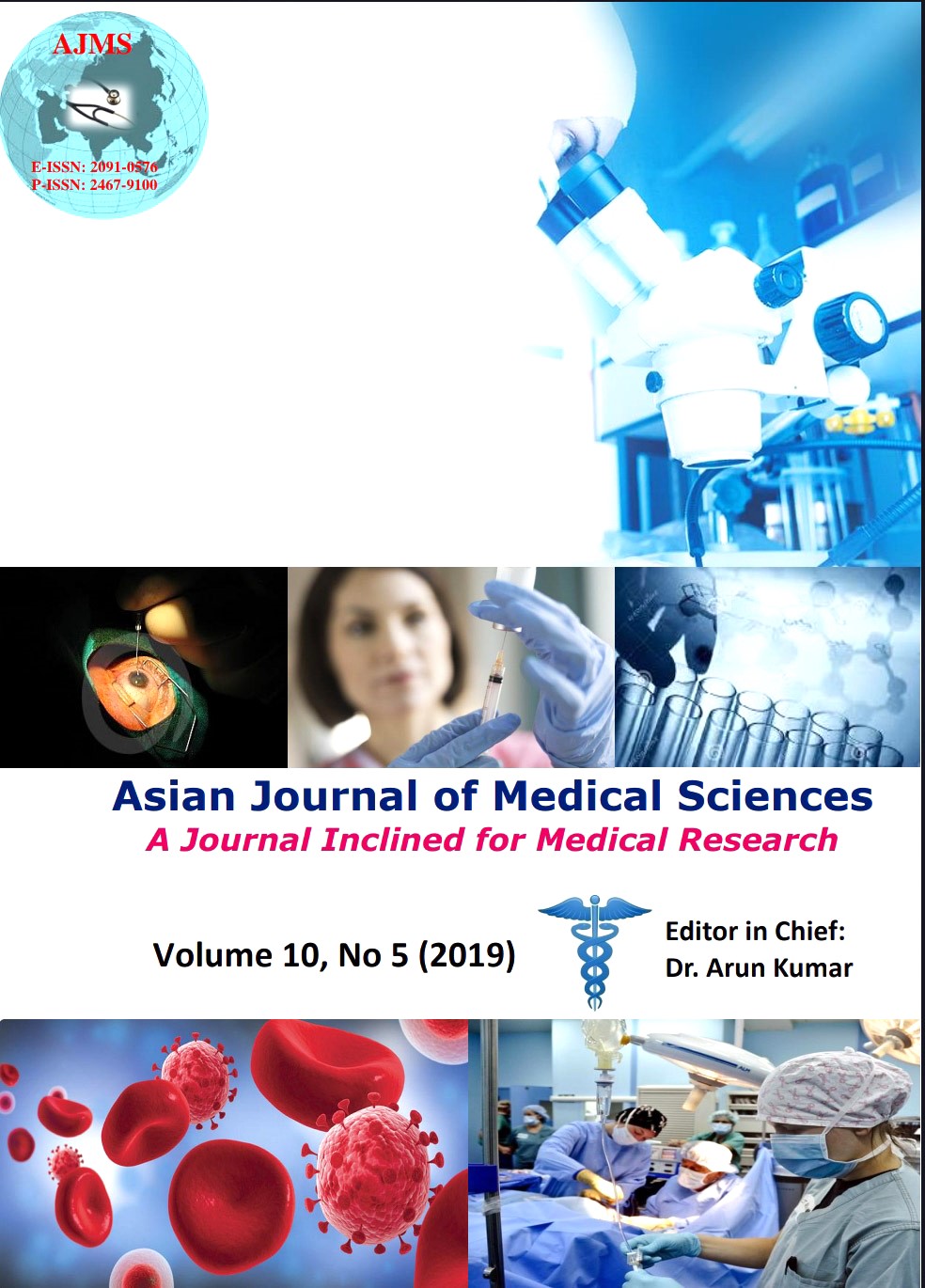Role of ultrasound in diagnosis and differentiation of benign and malignant ovarian mass: A Hospital based study in Western Nepal
Keywords:
Ultrasound, Ovarian mass, HistopathologyAbstract
Background: As ovarian malignancies are one of the commonest malignancies in female population, timely and accurate diagnosis helps in early treatment resulting in better survival. Ultrasound is easily available diagnostic tool not only to diagnose but also accurately distinguish malignant from benign ovarian masses.
Aims and Objectives: To evaluate sensitivity, specificity and accuracy of ultrasound in diagnosing and differentiating benign from malignant ovarian masses in comparison with histopathological findings.
Materials and Methods: A prospective study was carried out from August 2015 to August 2018 for a period of 3 years. Total 150 patients with ovarian masses who were operated in our hospital and their final histopathological reports were available, were included in our study. Ultrasound diagnosis and histopathological diagnosis were compared.
Results: Sensitivity, specificity and accuracy of ultrasound in diagnosing and differentiating malignant from benign ovarian masses were found to be 78.94%, 98.47% and 88.23% respectively compared with histopathological findings.
Conclusion: Ultrasound is very sensitive, specific and accurate in not only diagnosing ovarian mass but also in differentiating malignant from benign entities making it invaluable and important diagnostic tool in evaluation of ovarian masses.
Downloads
Downloads
Published
How to Cite
Issue
Section
License
Authors who publish with this journal agree to the following terms:
- The journal holds copyright and publishes the work under a Creative Commons CC-BY-NC license that permits use, distribution and reprduction in any medium, provided the original work is properly cited and is not used for commercial purposes. The journal should be recognised as the original publisher of this work.
- Authors are able to enter into separate, additional contractual arrangements for the non-exclusive distribution of the journal's published version of the work (e.g., post it to an institutional repository or publish it in a book), with an acknowledgement of its initial publication in this journal.
- Authors are permitted and encouraged to post their work online (e.g., in institutional repositories or on their website) prior to and during the submission process, as it can lead to productive exchanges, as well as earlier and greater citation of published work (See The Effect of Open Access).




